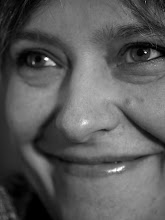
Ever wondered how to create a public mosaic? Kay explains what she did in the later stages of the creative process - from choosing mosaic tiles to fixing them to a wall.
"In my studio I tried to match the colours the Hemmingwell children had chosen for their designs with the kinds of mosaic tiles available," says Kay. "My supplies are Azzura tiles, which I get from Waxman. I go to the local tile shop with my sample chart and order them directly. They are the brightest tiles available - amazing, beautiful, bright colours - and for external use. The tiles are porcelain and fired to 1300 degrees, so they're completely frost-proof and durable."
"You buy the tiles by the sheet," she continues. "How many sheets you use depends on how big your project is. For this project, I probably bought about 40-50 sheets of tiles. I have an assistant who helps me cut out the tiles. The largest bird in the Hemmingwell mosaic is about two metres at its widest point."
"I took the children's designs to a print shop, where they were blown up to the appropriate size. I then transferred the designs to strong, brown paper - the kind you use for wrapping parcels," remembers Kay. "I stuck the mosaic pieces to the paper, but with the right side of the tiles facing down, using watered-down PVA-glue. It's important to remember you're working in reverse. The paper holds the tiles in place."
"Each bird took about three to four days to complete," she explains. "Once completed, I drew around each bird on stiff, white cardboard. These were the templates for use in positioning the final mosaics. That done, I cut the designs into sections to make them easier to handle and to transport. I loaded the mosaics onto hardboard and transported them in my van."
"On site, I drew out the precise shape of the mosaic on the wall using my templates," she says. "We filled up to the edges with tile adhesive/cement and stuck the mosaics in place. Depending on the weather, tilers often need to mix fresh batches of cement."
"The cement takes 24 hours to 'go off properly," continues Kay. "Once it was dry, we peeled off the brown backing paper, using just water and sponges. Then we needed to grout the birds. We used grey grout, and also went around the edges of birds to seal them and make them waterproof. The final job was to paint around the edges to neaten it all up. Now that they're in place, they look great!" concludes Kay.





No comments:
Post a Comment